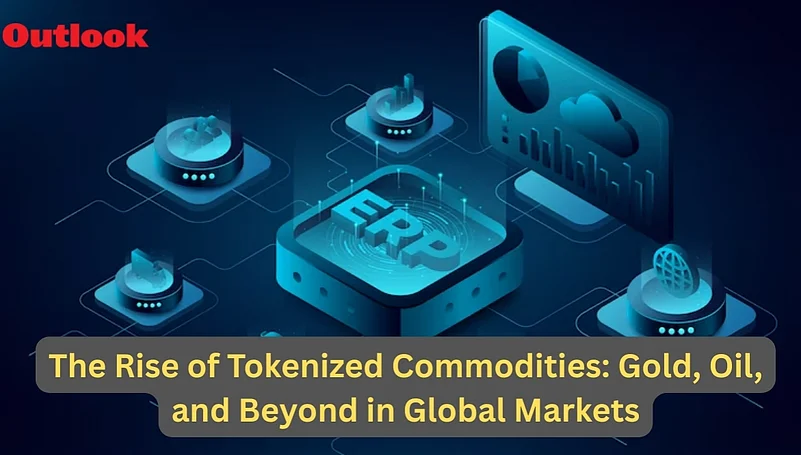The Quiet Reinvention of Traditional means
Goods like gold and oil painting have long stood as pillars of the global frugality. For centuries, these physical means have told fiscal systems, shaped public husbandry, and defined investor strategies. But moment, a new chapter is being written — one where these palpable coffers are entering the digital realm through tokenization.
Tokenized goods relate to the process of representing power of a physical commodity on a digital tally, frequently powered by advanced distributed technologies. Unlike traditional instruments or storehouse bills, these digital representations are secured, traceable, and incontinently transmittable. This invention isn’t about replacing the commodity itself it’s about transubstantiating how it's penetrated, changed, and valued in the ultramodern fiscal ecosystem.
Why the World is Paying Attention
The appeal lies in the mix of physical value and digital convenience. By enabling fractional power, tokenized goods open the doors to a broader investor base. Someone who could n’t go to buy a full gold bar or a significant oil painting contract can now hold a commensurable stake in these means.
likewise, the agreement process becomes briskly, more transparent, and lower reliant on interposers. Traditional trading platforms frequently involve clearinghouses, banks, brokers, and expansive attestation. Tokenization streamlines this by icing that power is vindicated and recorded in real time, significantly reducing disunion and detainments.
Translucency and traceability also elevate investor confidence. Since every sale is immutably recorded, the pitfalls of fraud, double spending, or power controversies dwindle dramatically. This also allows controllers and adjudicators to cover trades with further perfection, potentially setting a new gold standard for compliance in commodity trading.
Gold The First Mover in a Digital Future
Among all goods, gold has surfaced as the natural leader in this metamorphosis. Its long-standing part as a store of value makes it an ideal seeker for tokenization. Investors have always viewed gold as a barricade against profitable insecurity and affectation. In tokenized form, it retains that status while getting more liquid and encyclopedically accessible.
Institutions and individual investors likewise are showing adding interest in gold- backed digital means. They offer a ultramodern way to tap into the safety of gold without the need for physical storehouse or complex logistics. Power is digital, but the value is as palpable as ever — linked to vault- stored gold reserves, vindicated and streamlined regularly.
Oil painting and the Digitization of Energy
Oil is also entering the tokenization arena, though its path is more complex. Unlike gold, oil painting requests are heavily told by geopolitics, demand cycles, and logistical factors similar as transportation and storehouse. Still, the idea of tokenizing oil painting contracts, barrels, or reserves offers enticing benefits.
For case, energy directors can unleash liquidity by tokenizing unborn deliveries or reserves, giving them access to finances without staying for the physical trade. Investors, in turn, gain exposure to oil painting requests in a more direct and effective manner. This could homogenize access to one of the world’s most traded and strategic goods while adding layers of data- driven translucency and effectiveness.
Beyond Precious Essence and Oil What’s Next?
The tokenization surge isn’t limited to just gold and oil painting. Agrarian products, artificial essence, and indeed water rights are being explored as campaigners for digital metamorphosis. Imagine a world where soybeans, lithium, or coffee can be traded in real- time, across borders, with minimum bureaucracy.
This creates an connected global request where means traditionally tied to position, logistics, and scale come accessible with a smartphone. For arising husbandry and lower investors, this could be a game- changer — shifting power dynamics and enabling broader participation in global trade.
Challenges Ahead Regulation, Security, and Relinquishment
While the pledge of tokenized goods is inarguable, the path forward isn’t without obstacles. Regulatory fabrics are still catching up, and there’s an ongoing debate about governance, asset guardianship, and investor protection. also, specialized challenges similar as interoperability between platforms and secure asset guardianship must be addressed at scale.
Relinquishment will also depend on how seamlessly traditional request players — commodity exchanges, institutional investors, controllers — embrace this shift. Trust, both in the underpinning technology and in the institutions that manage these commemoratives, will be critical.
A Digital Renaissance for the Real Economy
Tokenized goods represent a ground between the analog and digital worlds where the stability of physical coffers meets the energy of ultramodern finance. This isn't a fleeting trend or academic bubble. It’s a strategic elaboration that has the implicit to review how the world values, trades, and invests in the real frugality.
In this unfolding story, gold and oil painting are just the morning. What we're witnessing is the emergence of a new asset class — born not from law alone, but from the dateless value of the Earth’s most vital coffers.














